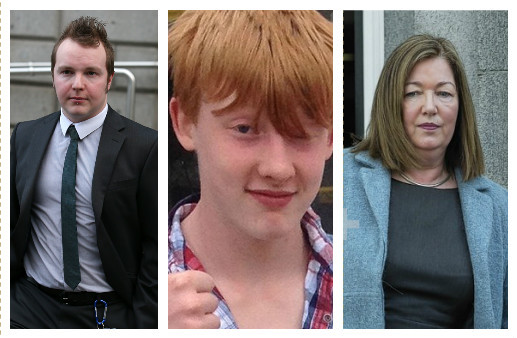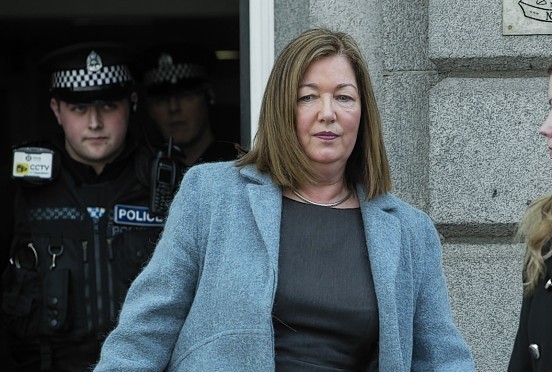A north-east school boy broke down in court yesterday as he recalled the moment he saw his friend Bailey Gwynne being fatally stabbed – during a row over a packet of biscuits.
The youngster was giving evidence on the opening day of the trial of a 16-year-old accused of murdering the teenager at a school in Aberdeen.
UPDATE: ‘Murder accused thought having knife was cool’
The High Court in Aberdeen heard the tragic incident unfolded in a small corridor which led off an area named “the street” at Cults Academy.
A 16-year-old, who also can not be named for legal reasons, cried hysterically in the witness box when he was asked to describe the events which occurred during lunch break on October 28.
The court heard that the youth, who was friends with both Bailey and the accused, had been in the corridor with them in the moments leading up to the incident.
Advocate depute Alex Prentice, prosecuting, asked the teenager to describe, in his own words, what he witnessed that day.
Fighting back tears the youth described how Bailey and the accused began arguing before the confrontation developed into a fight.
He initially said he could not remember what the row had been about or how it started.
He said he could recall the pair were holding on to each other “pushing and pulling” before the accused reached into his left blazer pocket and “pulled out a knife or some sort of sharp object”.
He told the court 16-year-old Bailey, who was unarmed, was standing across from him when the accused produced the blade.
Mr Prentice asked: “Then what happened?”
The boy replied: “He thrust it towards Bailey. It went into Bailey.”
The teen was then asked if he could remember where the knife entered his friend, to which he replied: “His tummy area.”
The court heard that despite the knife piercing Bailey’s heart the pair continued to fight for a few moments until they were interrupted by a teacher who led the boys away.
The court heard that the boy who witnesses the incident told the police that the accused “had the blade in his right hand, brought it round and stabbed him once to the stomach”.
He said he then “pulled the knife back out and they continued pushing and struggling with each other”.
The teen broke down again when he said he later went to find his friends and saw blood all over the floor.
Counsel for the accused, Ian Duguid QC, put it to the youth that the incident was all as a result of a row over a packet of biscuits.
The lawyer said: “Unbelievably, the evidence suggests that this all started over a biscuit.”
The court heard police officers had been told, following the incident, that one of the youngsters in the group had asked Bailey for a biscuit.
It was claimed Bailey refused to hand over the snack, and told the other youth he was “too fat”.
Mr Duguid then put it to the teenage witness that the accused called Bailey’s mother fat and he “lashed out”.
The boy said he could not remember.
Mr Duguid said that it was as a result of this that his client tried to “defend himself”.
Again, the teen could not remember.
Mr Duguid read part of the boy’s police statement to the court, which confirmed this was what he had said only a few hours after the incident.
He asked the teenager what he had meant by “trying to defend himself”.
The lawyer said: “That might be described as one person attacking the other. Is that the way it was? Did Bailey attack the accused?”
The boy replied: “I think so.”
Mr Duguid said: “Is that right, one person came for the other? The person defending himself pulled out a knife and uses it to defend himself against the other, or am I misinterpreting your statement?”
The boy replied: “No.”
The youth also identified the accused, who was sitting in the dock dressed in a black suit and black shirt, as being the one responsible for the stabbing.
He was also able to identify a knuckle duster, which was shown to the jury, as one he had seen in the possession of the accused while they were on school grounds last year.
The trial, before judge Lady Stacey, continues.

